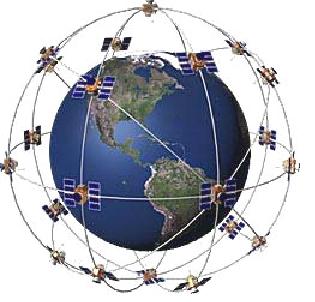An experiment that may assist in the development of methods to protect satellites and spacecraft from the impact of various radiation particles is being carried out at the Koffler Heavy Ion Accelerator at the Weizmann Institute
The Institute

Satellites: Vulnerable to radiation
An experiment that may help in the development of methods to protect satellites and spacecraft from the impact of various radiation particles is being carried out at the Koffler Heavy Ion Accelerator at the institute. The experiment is carried out in collaboration between Prof. Michael Hess from the Department of Particle Physics at the Institute, and Dr. Yeshayahu Lifshitz, Dr. Yosef Barak and Dr. Yaakov Levinzon from the Nahal Sorek Nuclear Research Center.
Spacecraft and satellites moving in space "absorb" many blows from various radiation particles. These are, among other things, "solar wind" particles, cosmic radiation particles as well as protons and electrons trapped in the magnetic field belts that surround the Earth (Van Allen belts). Quite a few of these particles are able to penetrate through the shell of the satellite, or spacecraft and damage various electronic components installed in them. These are tiny components (for example, memory cells of computer systems), the impact of a single particle of radiation could ionize part of the material contained in them, which could create a "short" in them and disrupt their operation, which could sabotage the ability to operate and even cause the loss of satellites and spacecraft.
The miniaturization trend of electronic components may exacerbate this danger (see article on future electronics, on the following pages). Therefore, to help develop effective methods to protect satellites and spacecraft from the impact of the various radiation particles, the researchers want to check how exactly the damage is caused by a radiation particle hitting an electronic component.
The most suitable laboratory for this kind of research is, of course, a satellite or the holiday spacecraft in space orbit around the Earth. But, running such a laboratory is expensive and very complex. Therefore, the researchers decided to create a simulation of space conditions using the Koepler heavy ion accelerator at the institute.
Using the accelerator, the researchers accelerate beams of heavy ions, thereby simulating the heavy particles of cosmic radiation that hit satellites located outside the Earth's radiation belts (for example, a communication satellite moving in a space orbit at an altitude of 36,000 km above the Earth's surface). This research, which is being carried out these days, may help attempts to develop new methods for effective protection of spacecraft and satellites.
